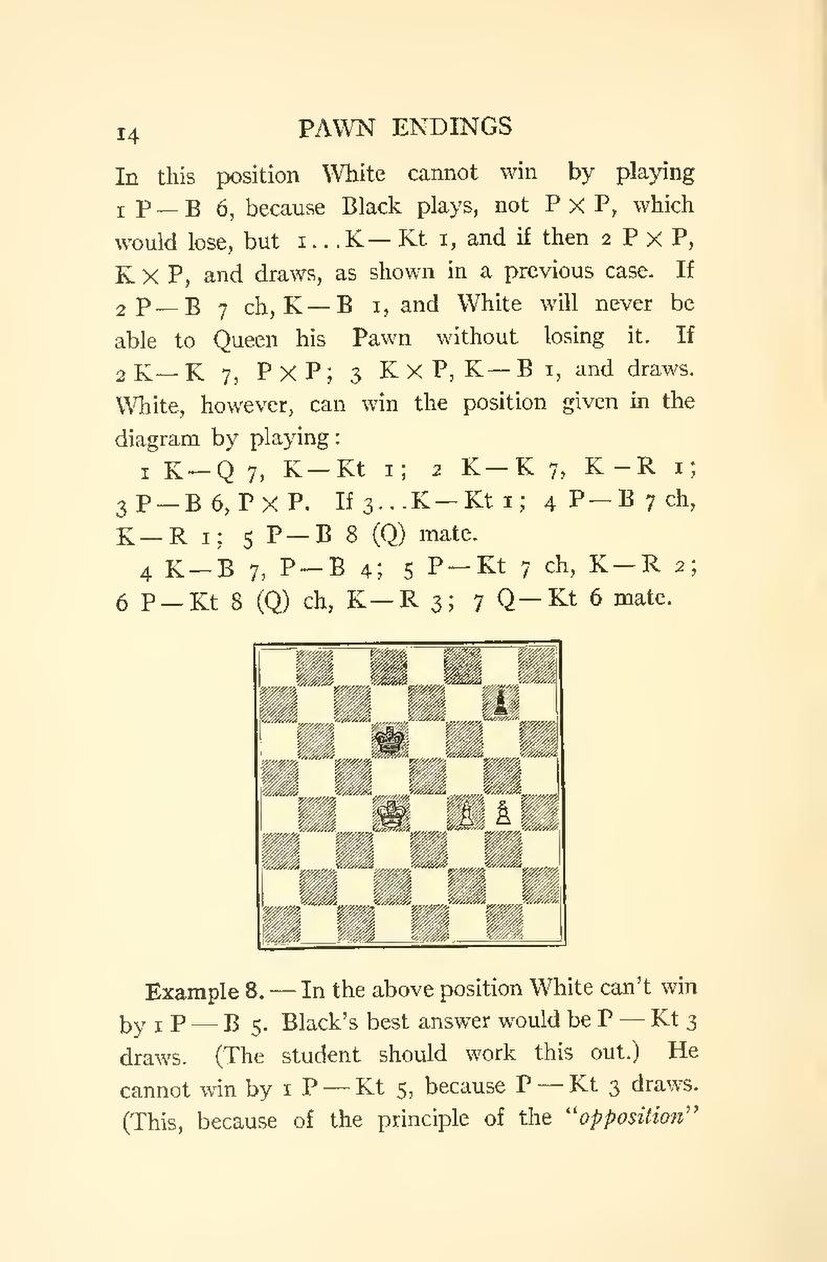In this position White cannot win by playing 1 P - B 6, because Black plays, not P × P, which would lose, but 1...K - Kt 1, and if then 2 P × P, K × P, and draws, as shown in a previous case. If 2 P - B 7 ch, K - B 1, and White will never be able to Queen his Pawn without losing it. If 2 K - K 7, P × P; 3 K × P, K - B 1, and draws. White, however, can win the position given in the diagram by playing:
1 K - Q 7, K - Kt 1; 2 K - K 7, K - R 1; 3 P - B 6, P × P. If 3...K - Kt 1; 4 P - B 7 ch, K - R 1; 5 P - B 8 (Q) mate.
4 K - B 7, P - B 4; 5 P - Kt 7 ch, K - R 2; 6 P - Kt 8 (Q) ch, K - R 3; 7 Q - Kt 6 mate.
Example 8.—In the above position White can't win by 1 P - B 5. Black's best answer would be P - Kt 3 draws. (The student should work this out.) He cannot win by 1 P - Kt 5, because P - Kt 3 draws. (This, because of the principle of the "opposition"

